In early July I photographed a mated pair of Williamson’s Sapsuckers in Clark County, Idaho. As usual I was fascinated by their behaviors.
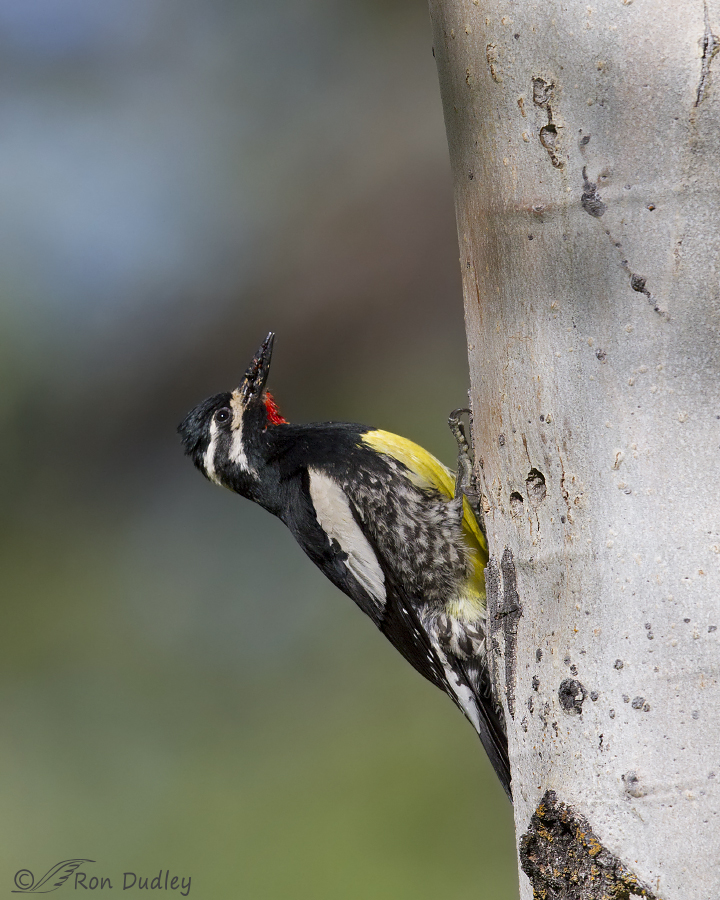
1/3200, f/6.3, ISO 640, Canon 7D, Canon EF500mm f/4L IS II USM, not baited, set up or called in
This is the male at the nest-tree, a dead and leaning aspen. Like many (though not all) birds, woodpeckers have both sideways monocular vision and forward binocular vision so I often find it difficult to determine what direction they’re actually looking. Is this male looking at me or at something higher up on the tree? Or perhaps something to its left that I’m unaware of?
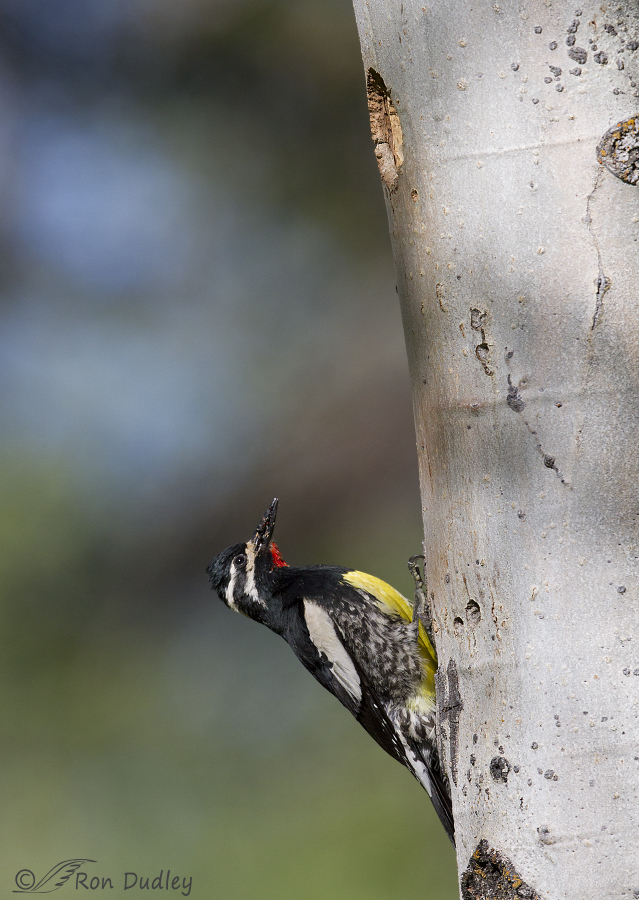
1/3200, f/6.3, ISO 640, Canon 7D, Canon EF500mm f/4L IS II USM, not baited, set up or called in
A different crop of the same image reveals the answer – he’s concentrating on his nest hole directly above him. These birds were busy feeding ants to chicks in the nest and they would nearly always land just below the nest for a few moments before flying a little further up to the actual entrance. Usually one parent was in the nest as the other bird approached with a bill full of ants.
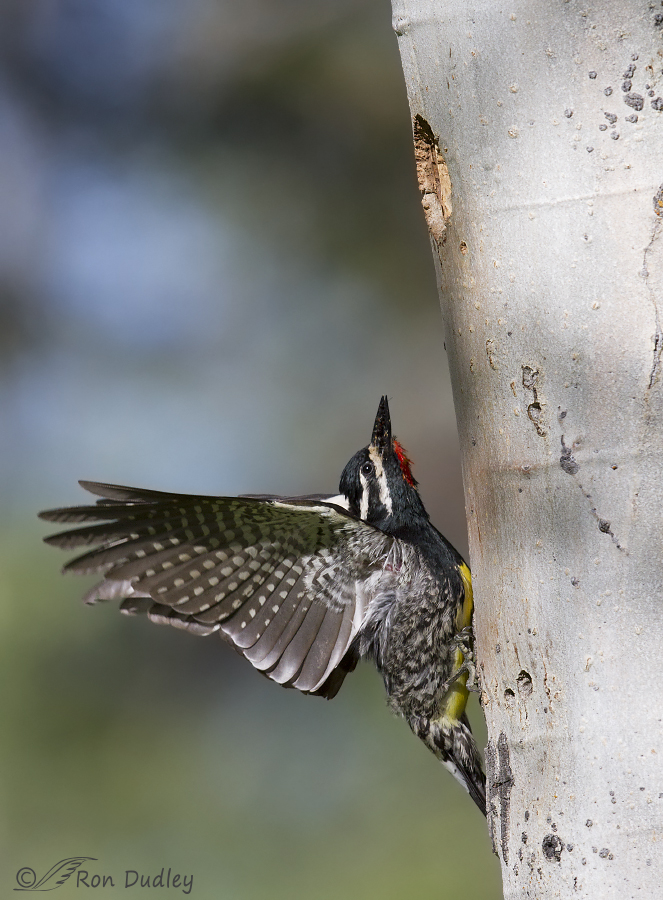
1/3200, f/6.3, ISO 640, Canon 7D, Canon EF500mm f/4L IS II USM, not baited, set up or called in
This is the shot I worked hard to get but seldom achieved – the take-off straight up (or steeper since the tree leans in the direction of the hole) toward the nest. The timing is critical for this incredibly fast action and I can’t tell you how many shots I wasted by firing a burst when I thought the bird might take off and it didn’t. After a while I began to suspect that they were just playing with me and delighting in my frustrations…
But this time it worked and two shots later in the burst…
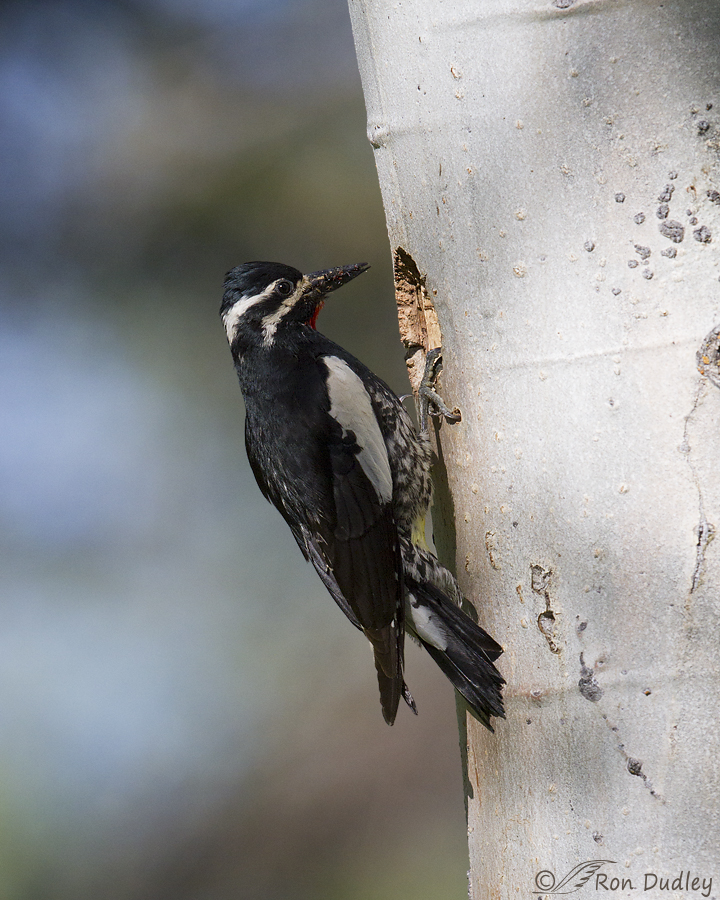
1/3200, f/6.3, ISO 640, Canon 7D, Canon EF500mm f/4L IS II USM, not baited, set up or called in
the bird had landed at the hole and folded its wings. The lighting on his face isn’t ideal but I decided to include the shot anyway.
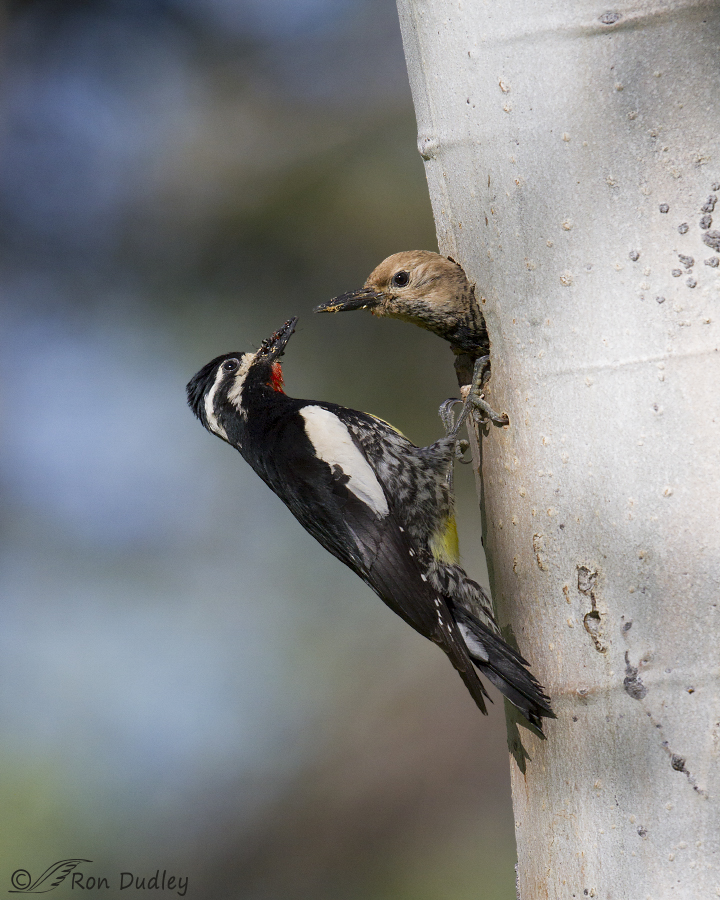
1/2500, f/6.3, ISO 640, Canon 7D, Canon EF500mm f/4L IS II USM, not baited, set up or called in
A moment later the female stuck her head out of the nest and then flew off for more ants. Here her bill contains wood chips from the nest.
When I began this post my intention was to include only the third image because I think it’s the best of the bunch but as is often the case the post evolved as I worked on it. I like to tell behavioral stories as well as showcase some of my images so in the end I decided to go this route.
Ron
Note: I was also (one time only) able to capture the female as she took off toward the nest-hole from lower down on the tree. If you missed that post and have the interest, here’s the link.


A parents work is never done.
I do love these insights into ‘A day in the life of…’
Thanks Ron – fascinating and beautiful. And even from a distance I love these little ant killers.
How wonderful that you were able to capture the vertical takeoff! This is a delightful series of photos. With or without a camera, I find woodpeckers to be one of the most fun birds to watch. And when you post a whole series like this, it’s almost like I got to be there. Thank you for that.
Entertaining and informative essay. Thanks!
Why do they keep exiting with chips? As the chicks grow so does the need to expand the cavity? Or are they soiled chips? Or all of the above?…..Are these same cavities used over and over again? When the sapsuckers are through with them, does someother critter move in? Sorry to ask so ,any questions…but am too curious sometimes.
Patty – speaking to your last question, woodpecker nest cavities are often used by other cavity-nesting birds in succeeding years. Some species can’t make their own cavities and rely on woodpeckers to create their nest sites. This is one reason why it’s important to leave standing dead trees (“Snags”) in a forest.
Exactly, Tim! By coincidence a couple of days ago I donated one of my sapsucker images to the Cavity Conservation Initiative – a southern California group dedicated to conserving “snags” for use by cavity nesters. http://cavityconservation.com/ A worthy cause deserving of our support, IMO. I wish each state had a group like that…
That take off shot is so incredible. A big WOW!!!!! Did you ever see the babies?
Nope, never saw them, Ellen but I heard them often.
I especially like the last, the , “Oh! It’s you!” shot….he with the ants, she with the chips. What did she do with the chips so she could receive the ants? Again, the perfect symmetry of the hole is impressive. The males are such beautiful, colorful birds. Take off shot is wonderful!
Thanks, Patty. She didn’t “receive” the ants. She flew off with the chips and dropped them before retrieving more ants. The male went inside the cavity to feed his ants to the chicks. Then he also exited with wood chips. That was their regular routine and I suspect it went on all day. They were very hard-working parents.
Interesting info and spectacular shots, thanks so much for sharing Ron!
Charlotte
Thank you, Charlotte.
Remarkable take-off shot! Helps me appreciate how finely developed their skills are.
“Helps me appreciate how finely developed their skills are”
You’ve got that right, Alison. I often marvel at the same thing.